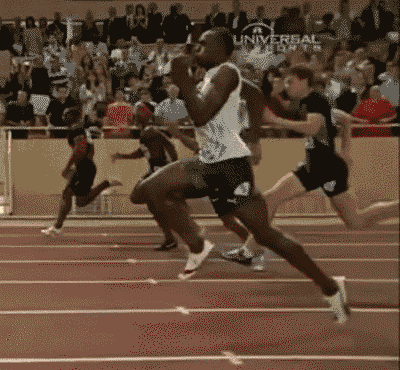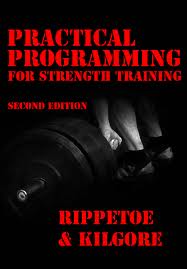Recovery From Training: Part One

The topic of recovery is one that is particularly important to people who train for athletics. The most commonly accepted adaptation model that we use in training is Hans Selye’s General Adaptation Syndrome framework. Selye wasn’t an exercise scientist – rather a biologist – but he broke down what happened to the body when stressors were introduced:
- Alarm Stage: The “fight or flight” response is activated. Adrenaline goes up, cortisol is released, and blood pressure increases. In training, this would be anything that would cause adaptation – an increasingly harder set of squats, or a longer distance run than previously done.
- Resistance Stage: Homeostasis begins restoring balance as the stressor is removed. If the stress was sufficient enough to drive an adaptation, the body’s level of fitness is temporarily decreased. For example: If you were to set a new squat 5RM on Monday, your squat strength would be significantly diminished on Tuesday.
- Exhaustion Stage: The stress has continued on for too long and the body’s ability to resist/adapt to the stress is overcome. Stress levels go up and stay up; prolonged exposure to this phase can cause depression, anxiety, and possibly even damage to internal organs. This is the stage where trainees are “overtrained.”
You can read more about how Selye’s General Adaptation Syndrome model factors into training from the excellent book Practical Programming for Strength Training by Mark Rippetoe. I highly recommend this book for everyone who is serious about training for athletics – even runners.
I’ve written in the past about overtraining and why it’s important to avoid:
High school athletes are often rank novices – they are thoroughly unadapted to stress and can be pushed to their limit every time they train because they have no previous experience! Novices do not get stronger when they train, they get stronger when they recover. Overtraining is when you push an individual past his limitations and do not respect the time it takes to recovery from a workout that disrupts homeostasis. Overloading is when you design a program that disrupts homeostasis – good programs overload, but do not overtrain.
What Does This Mean for Baseball Players?
Overtraining is a danger for all people who seriously train, and not so much for the people who are jogging three times per week or curling six times per week. For baseball players – particularly pitchers – this is an even more vital concept to manage. As discussed above, when you stress the body in such a way that recovery for that modality is impacted, you will temporarily lose ability in that modality. If you run four miles and this is a sufficient stress to drive adaptation, your long slow distance endurance ability will take a temporary hit. This won’t affect your pitching much, as pitching is an anaerobic/ballistic activity (yet another reason why long distance running is a waste of time for pitchers), but what about other types of training?
Let’s say that on a given day when fully rested with low levels of stress (homework, life issues, physical training, etc), you can throw about 80 miles per hour. Your absolute best fastball is about 83 miles per hour, but 80 mph is a safe range that you’ll be in when throwing a max effort bullpen. What happens if you set a new squat 5RM across three sets on Monday and throw a max effort bullpen on Tuesday? You’ll almost assuredly be throwing less than 80 mph, because your strength and power modalities have been temporarily diminished. The fact that your pitching would suffer is a good thing – it means that the stress that caused this temporary dip in ability will also positively affect it going forward once you are fully recovered. (Actually going out and throwing that bullpen the day after squatting is probably not a good idea.)
Pitching while fatigued is a very good way to hurt yourself. Your mechanics may change while fatigued, introducing a different type of stress to each joint center that has adapted to a previous sequencing model of the kinetic chain. Perhaps your arm lags behind your body because your legs and core are fatigued – this could cause a mechanical flaw during the arm cocking phase and increase the chance of an injury.
How Do You Manage Recovery?
Fortunately, rank novices can get away with squatting, lifting heavy weights, and doing sprint-based work while throwing bullpens and suffering few (if any) detrimental effects. So, if you’re new to training and aren’t very advanced when it comes to pitching, you won’t notice much change. However, as players move from the novice end of the spectrum in both pitching ability and weight room proficiency toward the advanced end, this becomes a real issue to plan around.
By properly modulating intensity for intermediate and advanced trainees, you can ensure an athlete will be throwing his maximum effort bullpens while 90-95% fresh and that he will be able to give his best effort in his max effort lifting days as well. This can be achieved by breaking up 5RM/3RM/1RM attempts into longer intervals and introducing more assistance/accessory/partial exercises into the program. But – and this is a major caveat – this type of complex programming is NOT necessary for novices and early-stage intermediates. Assuming they are healthy enough to continue on with a properly-designed program, they should focus on getting strong and sticking to their program as best they can.
The novice stage of training is not a bad thing – it is the period of time where you will make the most rapid gains with almost no need to focus on recovery or serious dietary concerns. I put 250 pounds on my back squat, 100 pounds on my bench press, and 300 pounds on my deadlift in my novice period, which lasted about 8 months – all while maintaining my bodyweight! This is the time to drive the biggest and fastest gains – don’t waste time doing stupid isolation/assistance work when you will derive no benefit from it.
How to View Recovery
In Part Two of this series, we’ll talk about the modalities of recovery and how it can carry over from one exercise to the next. Recovery is not a pitcher of liquid that you pour into various cups labeled with your bodyparts – it is far more complex than that.
Comment section
Add a Comment
You must be logged in to post a comment.

Recovery From Training: Part Two | Driveline Baseball -
[…] Part One of this series, I talked about how recovery was portrayed under the generally-accepted principles of Hans […]
Recovery From Training: Part Two - Driveline Baseball -
[…] Part One of this series, I talked about how recovery was portrayed under the generally-accepted principles of Hans […]
Measuring Readiness of Baseball Pitchers Using Omegawave and HRV - Driveline Baseball -
[…] mentioned in a previous blog post, Selye’s general adaptation […]